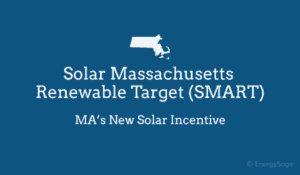To go back in time, the SREC-I program started in 2010 as a way to incentivize homeowners to invest in solar and receive a payment for every 1,000 kWh their system produced. This system quickly became very lucrative for homeowners, as the cost of solar continued to go down. This forced the state to launch the SREC-II program, which followed the same guidelines except for incentives were lowered by 5% every year. Under this program, solar has become so popular that the end goal of the program, which was to reach 1,600 MW of solar capacity by 2020, is actually going to be met 3 years early. This is where the SMART program comes in.
How Will SMART Affect My Savings?
SMART offers a fixed compensation rate for the project over the next 10 years. The incentive change had a direct effect on the monthly savings of residential solar customers. For example, an 8,000-watt system under the SREC-II program would generate $19,000 in savings over its life. However, under the SMART program the savings would be about $10,400. Unlike the SREC-II program, where you would get this amount above and beyond your net metering, the value of energy determined by your provider is subtracted. For example, if under SREC-II you would get $0.28 for every kWh you produce beyond your net metering, now under SMART it is likely to be closer to $0.18 per kWh. It is important to note that the customer saves money over the life of a system under both programs. The difference in savings, however, is substantial.
A final detail about the SMART program is that the incentives decrease over time. The program has a block structure so that as each block fills up, the incentives go down. The block is set at 200 megawatts of solar installations. Once enough residents install solar to reach that cap, the block is filled and incentives decrease by 4%. The decrease is meant to reflect solar technology becoming more cost-effective. What this means for you is that the longer you wait to go solar, the less you save.
What Does This Mean For Potential Customers?
The most cost-effective time to invest in solar for your home was yesterday. The only difference between the two is the amount of savings. There is no set date on when SREC-II will end, all we know is that it will be replaced soon. This means that to get the most savings, the best time to go solar is now.
